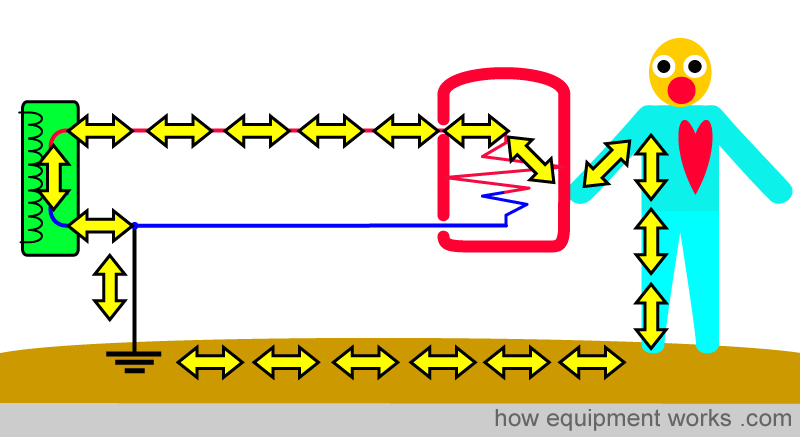
We will discuss the following aspects. Please scroll down and start reading.
- Why is electrical safety important in the operating room?
- The body must be part of a complete circuit to get a shock
- Time for a cup of tea
- Concept of Earth (Ground)
- Basics of Electricity Supply and Neutral Wire
- Basic shock pathway
- Insulation
- How the “wire from equipment case to mother earth” protects you (earth wire)
- Isolation Transformer
- Micro shock
- Safety classifications
- Effects of electric shock
- What can you do for safety?
Important note:
To understand electrical safety, it is crucial that you first understand the basic concepts of electricity. This website has a section dealing with “basic electrical concepts”. If you wish to read that section first, please click on the green battery below. If you already understand the basics of electricity, just continue reading.
Why is electrical safety very important in the operating room?
Like all tools in life, electricity can be your friend or your enemy.
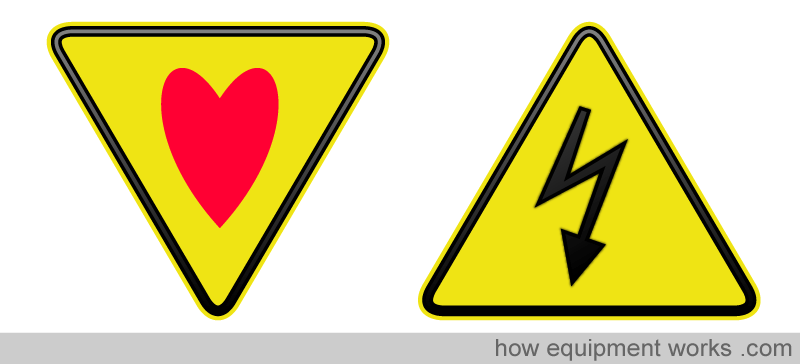
Electrical faults can harm your patient and you. The risk is very real. I know this because some time ago, electricity nearly killed me while I was at work in an operating theatre (not in my current hospital !). A surgical operation was going on and a wiring fault happened in the power plug extension box shown below:

Because of the fault, there was current everywhere including on the IV drip stand below. When I helped to move an operating light, my arm touched the electrified drip stand. An electrical current passed from the IV drip stand to my arm and then went across into the operating light (see arrows). I felt quite a jolt of pain and managed to move my arm away.
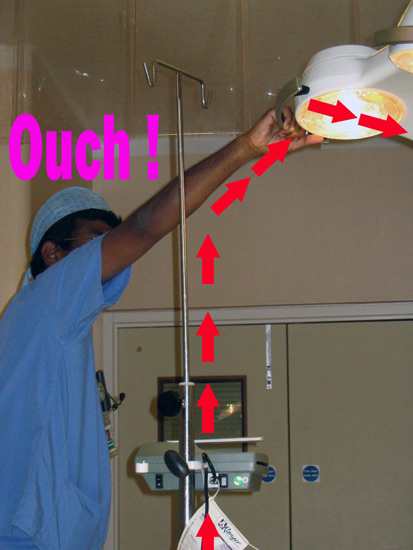
To cut a long story short, I survived the episode (otherwise I suppose I wouldn’t be writing this !). The pictures above were taken soon after the incident. I got someone to take the pictures as I was hoping to publish the incident as a case report or letter in an anaesthesia journal. Unfortunately even having a near-death experience was not enough to get it published! Here is the rejection letter. I do like the bit circled in red …..
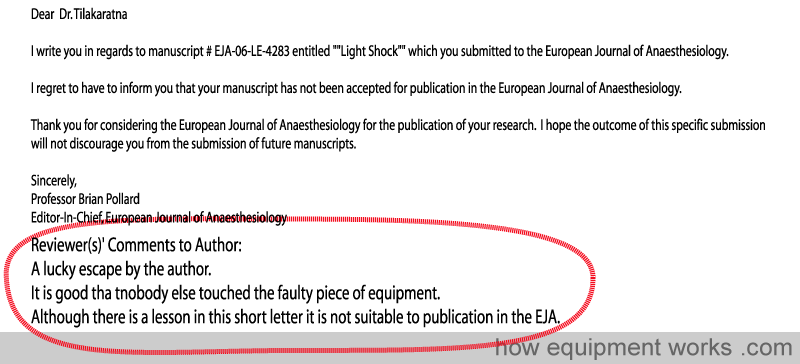
Anyway here are some reasons why electricity is particularly dangerous in the operating room.
1. Operating rooms are full of electrical equipment.
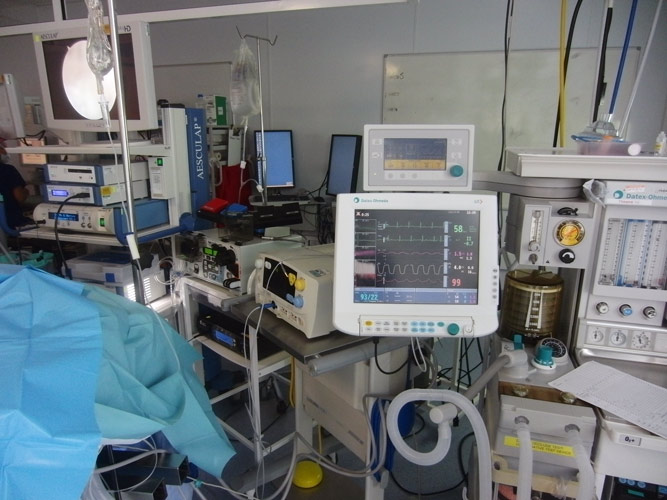
2. Anaesthetised patients are “helpless” and can’t move away from a shock. In the example of me getting an electrical shock, what probably saved me was my ability to quickly move my arm away. Unlike me, who was quite awake, the anaesthetised patient getting an electrical shock could not shout for help or move away, increasing the risk of harm.
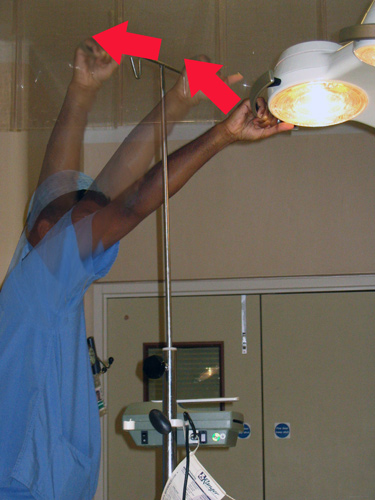
3. Electrical current is invisible: Fire, like electricity, can be both useful and dangerous. Fortunately, fire is visible, so you are unlikely to touch it.
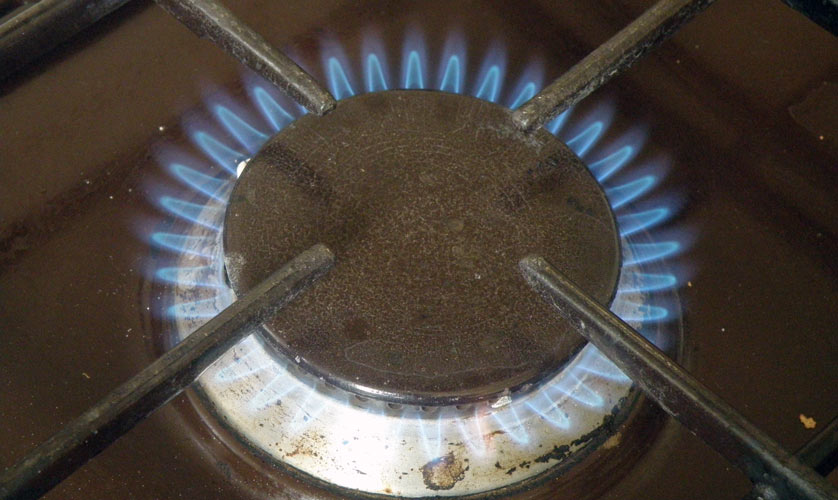
Electric current is however more dangerous than fire because you can’t “see” it. Below is a metal spoon.

Now we pass a dangerous electrical current through the same metal spoon.
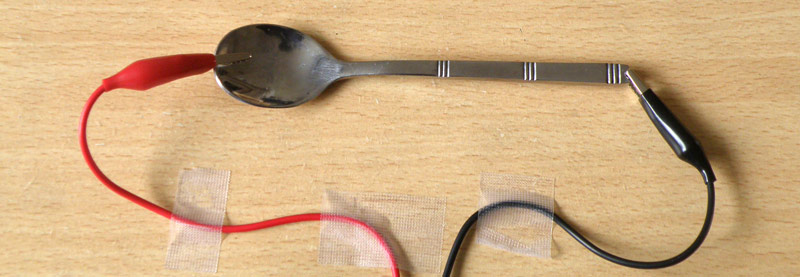
You can see that the metal spoon looks the same with and without current. That is the danger of electricity. It is invisible. If you touched the electrified spoon, you would get a possibly fatal spoonful of electrical shock.
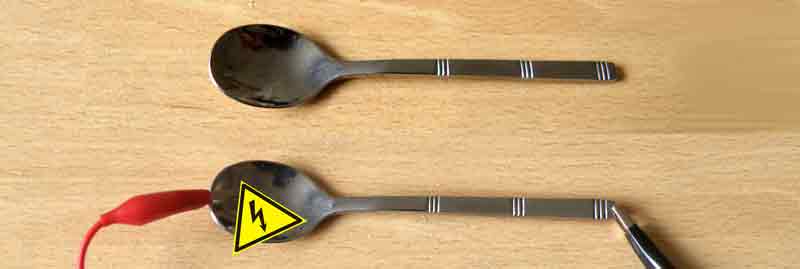
(I know it is obvious, but please do not try the above experiment yourself !)
4. Operating rooms are full of fluids :
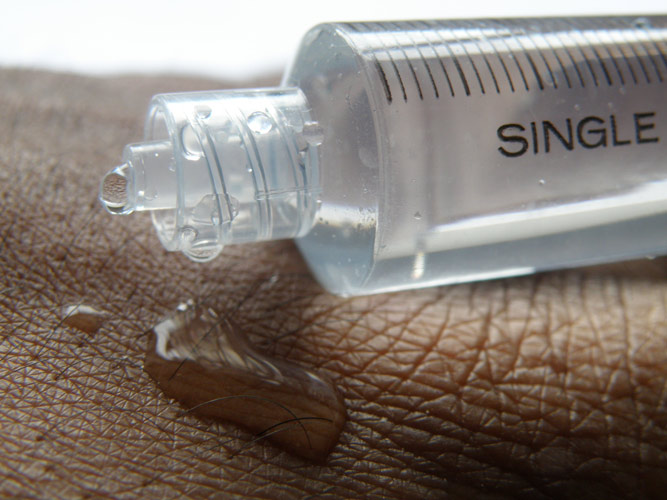
Electrical shocks are more likely to be nasty in the presence of fluids. It has got to do with the fact that wet skin has a much lower resistance to current than dry skin. You have read elsewhere on this website (electrical basics) that current flow is related to resistance. A high resistance makes less current flow while a low resistance makes more current flow.
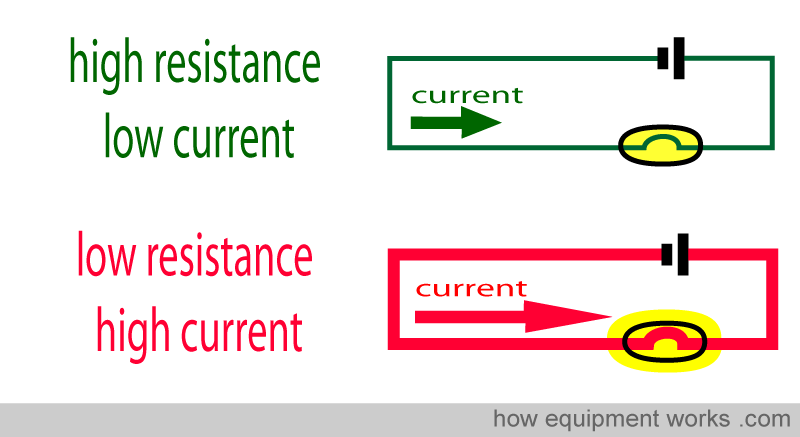
Let us imagine that you touched a metal surface that has an electrical fault with a “dry “ finger.
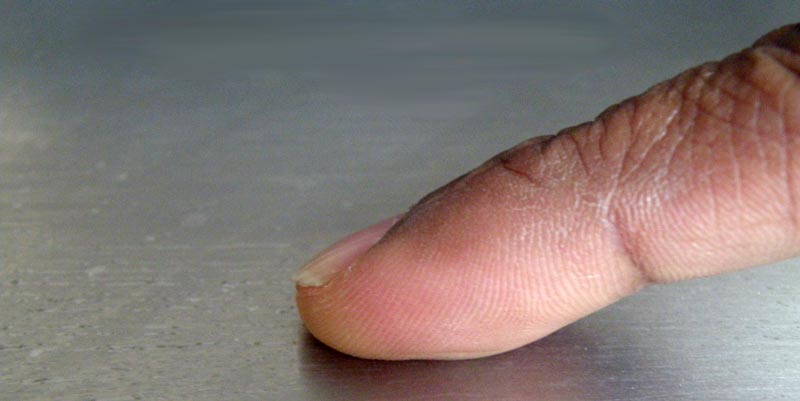
The dry finger has a high resistance. Therefore, only a small amount of current will flow from the metal surface to inside the body.
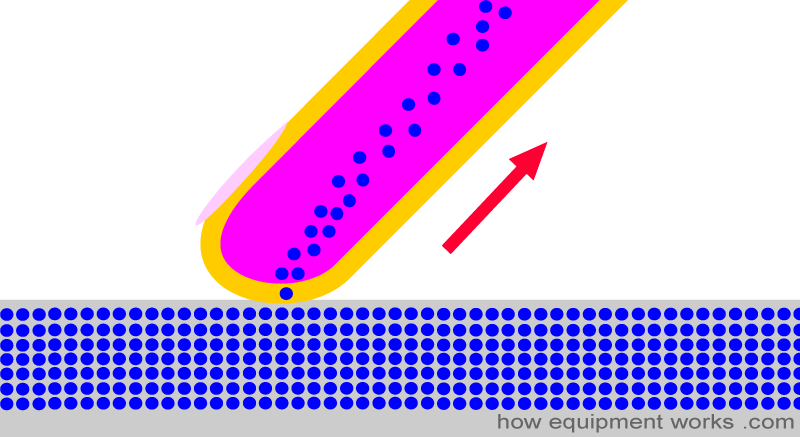
Now imagine that you touched the same metal surface, but this time it was wet with saline or some other fluid.
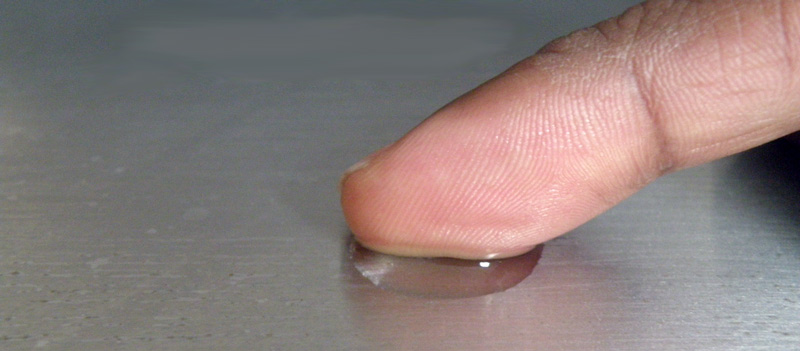
Generally, liquids have a much lower resistance to current flow than dry skin. Therefore, your wet finger allows a much larger amount of current to flow through you, giving you a big shock.
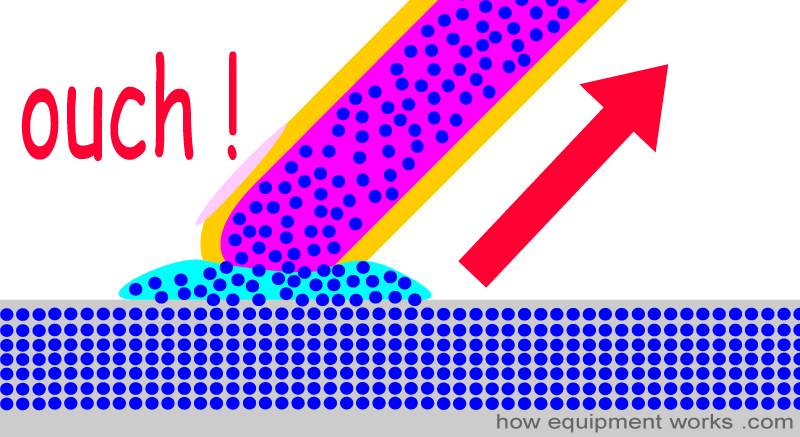
So, wet skin, because it has a low resistance, makes you have a higher risk of harmful electrical shock.
The body must be part of a complete circuit to get a shock
As we go along, we will learn many concepts necessary for understanding how electric shocks happen. Later, we will be able to combine these individual concepts together to explain how electrical shocks happen and the defence mechanism against them.
Let us start by discussing the concept that, in order to get a shock, you must be part of a “completed electrical circuit “.
Let me explain. Let us imagine that you live in a nice little house and there is a road that takes you to the hospital and another road that brings you back home.
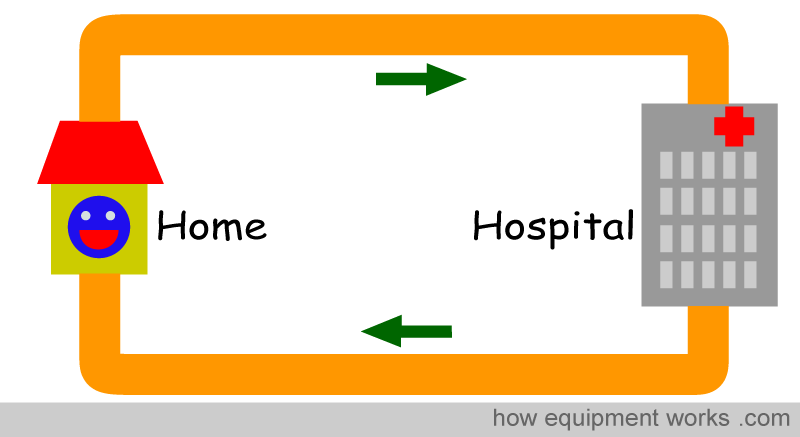
I am sure you are a hardworking person earning some money for your family (okay, just pretend you are a hardworking person …). You leave your home in the morning to work in your hospital.
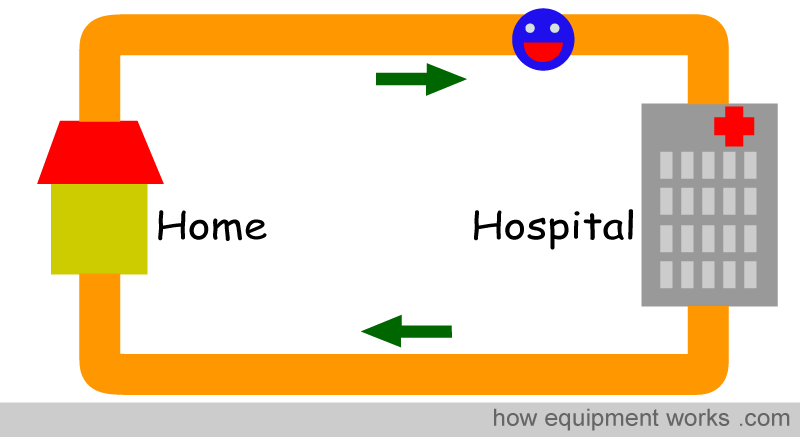
But by the end of the day, I am sure that you eagerly return back to your home.
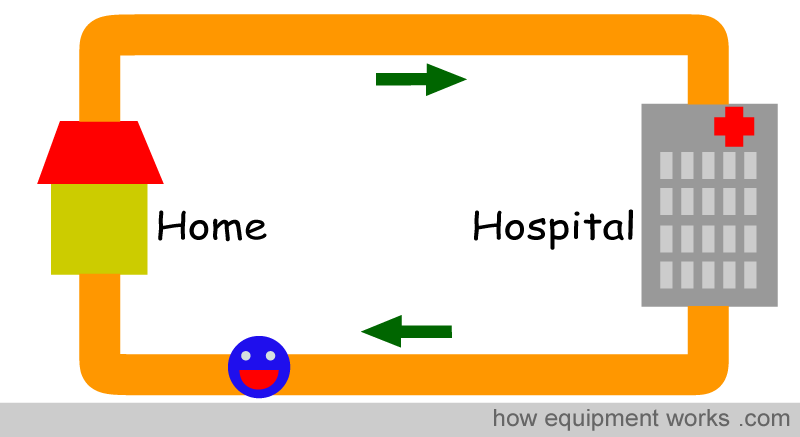
Now suppose your hospital management suddenly changed the working arrangement. The highly “˜intelligent’ managers in your hospital decide to make a weird new contract where if one worked in the hospital, that person would not be allowed to go home. They do this by removing part of the road leaving the hospital.
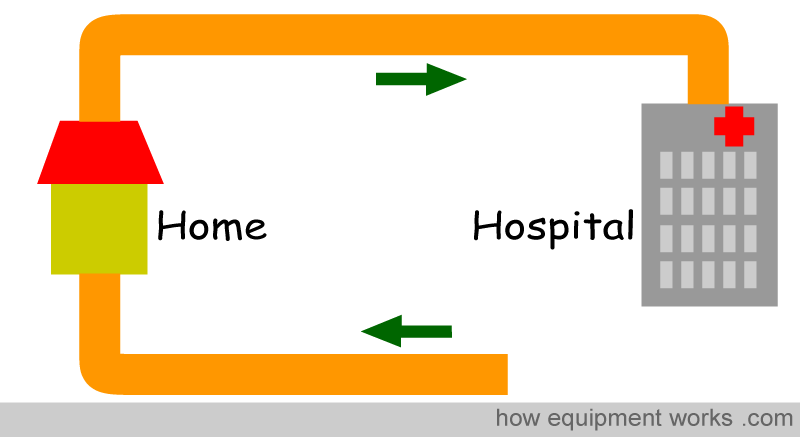
Obviously, with this contract, you decide not to work. The reason is, that if you went to work, you would not have a way to return back home. In other words, because you have no “return pathway”, you don’t even leave home.
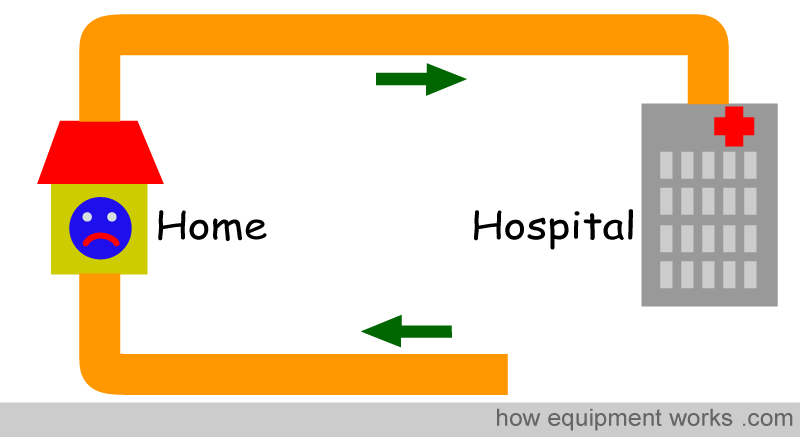
Electrical current is the same. Current likes to do work, but will do so only if it has a “return path” to its “home”. In the example below, current flows from the battery because it, after doing work (lighting up the bulb), is able to return back to the source of the current.
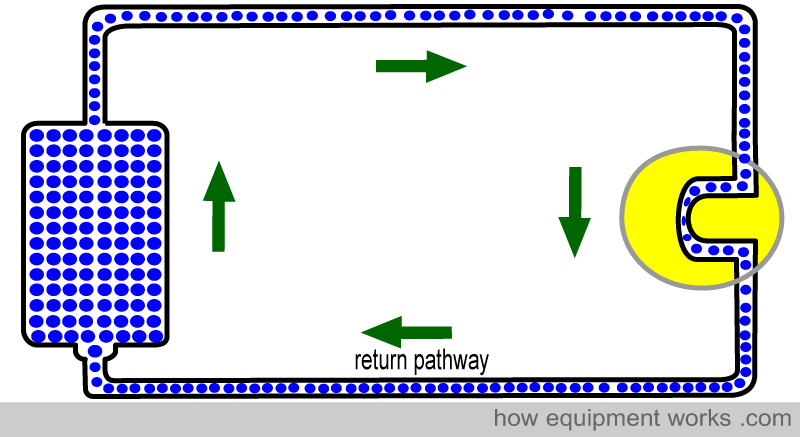
If there is no return pathway back to the source, the current will not flow. (Just like people will not go to work if they have no return pathway to their home.) In the example below, there is a path from the battery to the place of work (light bulb). However, there is no return path back to the battery. Since there is no return pathway, current doesn’t flow through the bulb and the bulb remains unlit.
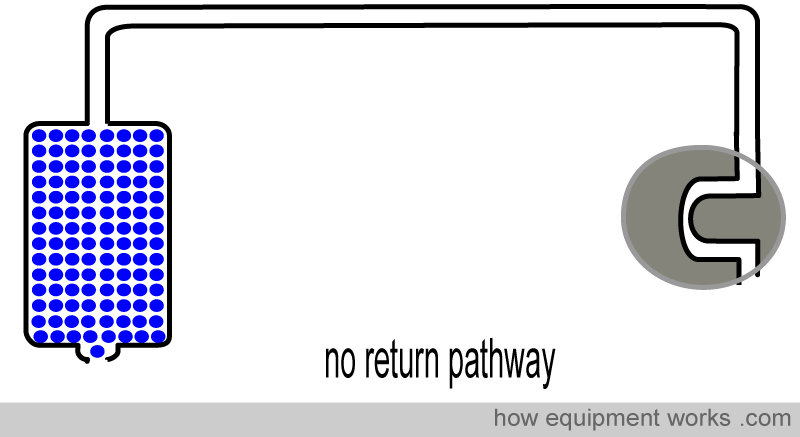
The same concept applies to electrical shock. Electrical shock is due to the flow of current through the body.
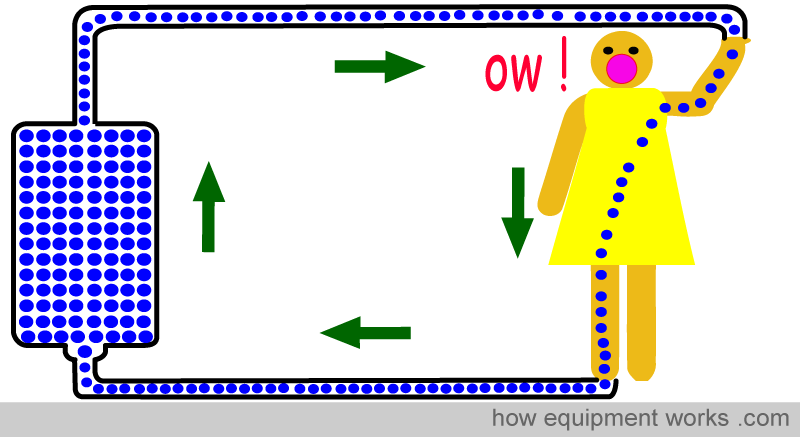
For the shock to happen, there must be a pathway from the source of current to the body and a return pathway back to the source (complete circuit).
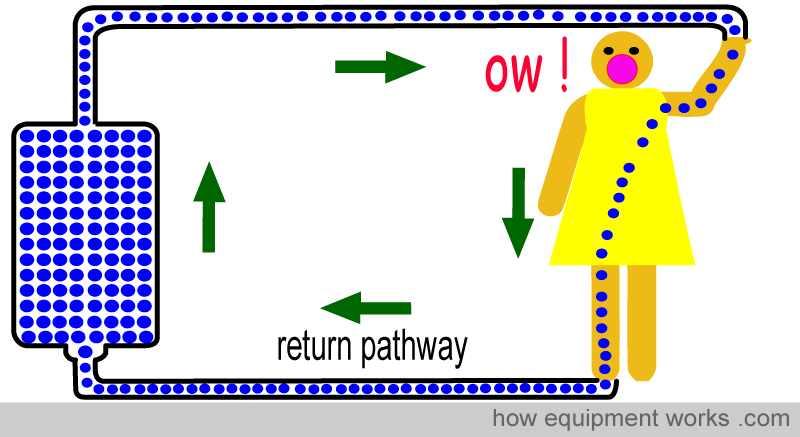
If there is no return pathway, then no current flows and therefore there is no shock.
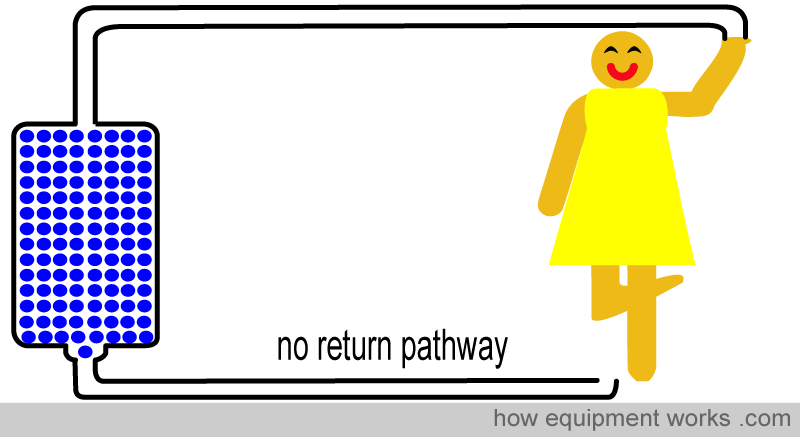
So remember, for electric shock to happen, there has to be a flow of current. For a flow of current to happen, there must be a completed circuit. I.e. the current must have a way of returning to where it came from (source). Do remember this concept. We will return to it later, where it will become useful to understand how electric shocks happen.

I am the author of this website. Let me tell you about another website I created that you may like. I am interested in psychology, especially how one’s thinking can affect one’s happiness. I have made a website that explains a concept called “Happy Thinking”, which is about how one can find happiness by changing one’s way of thinking. Happy Thinking is an easy-to-understand concept that you can use in daily life to be happier. You can learn about it on the free website at the link below.

Time for a cup of tea
Now it is time to select a piece of simple equipment that we can use as an example in our discussions. I suggest we use an electric kettle as an example. I know that an electric kettle isn’t a common thing to find inside the operating room. Nevertheless, an electrical kettle will serve us well to understand many basic concepts, which you can later apply to other equipment such as an anaesthesia machine. So imagine yourself having a tea break in the staff room and there is an electric kettle there.

I can’t draw a real kettle very well, so please accept my simplified version shown below. Please note that this electric kettle is made of metal (i.e. not plastic).

Inside the kettle is an electric heating wire (shown in red )
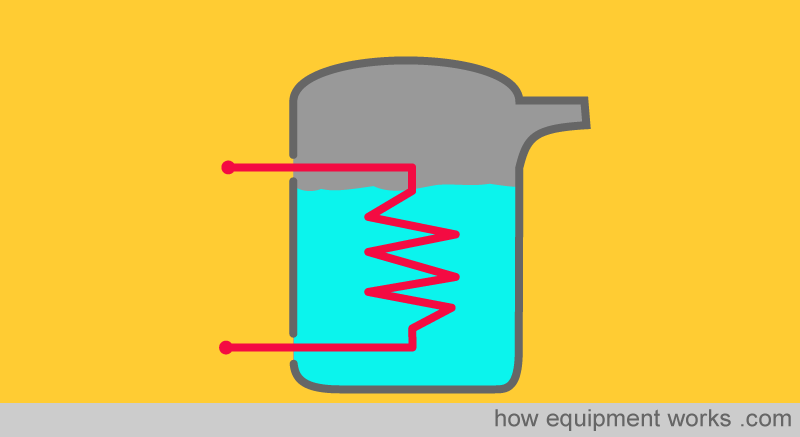
When an electric current (pink arrows) is applied across the heating wire, the wire heats up and boils the water.
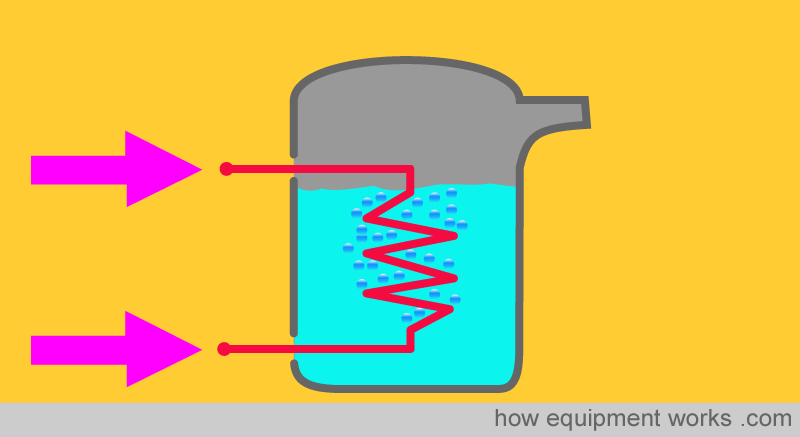
Note that the wires carrying electricity (red arrow) do not touch the metal case of the kettle (grey arrow). There is a gap (green arrow) between them which is there to prevent current from spreading to the metal casing.
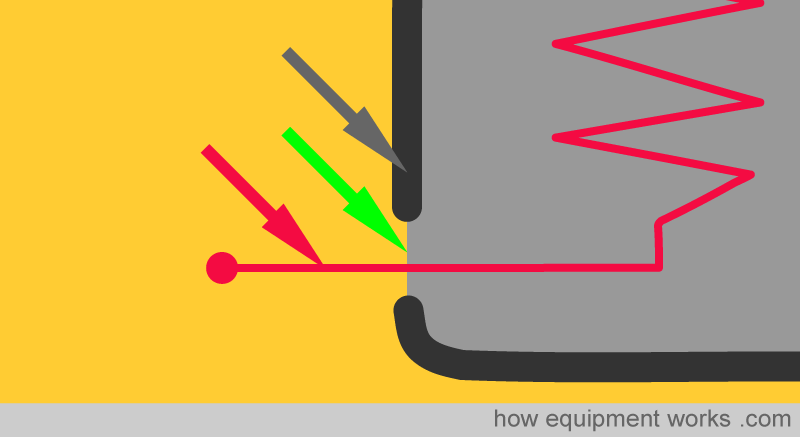
Let us now create a “fault” in this kettle. Imagine that the wires carrying current (red arrow) accidentally touched the metal case (grey arrow). Now, as shown, the metal case would also have an electric current.
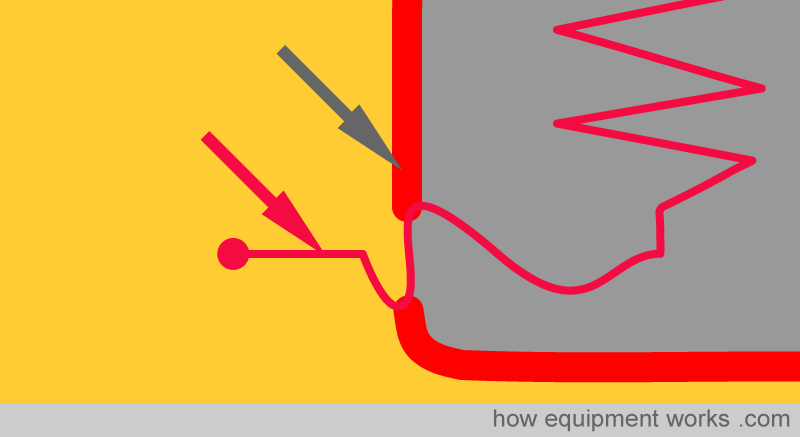
If you touched this kettle, you would get a massive electric shock instead of a cup of tea, since the whole case now has ‘current’.
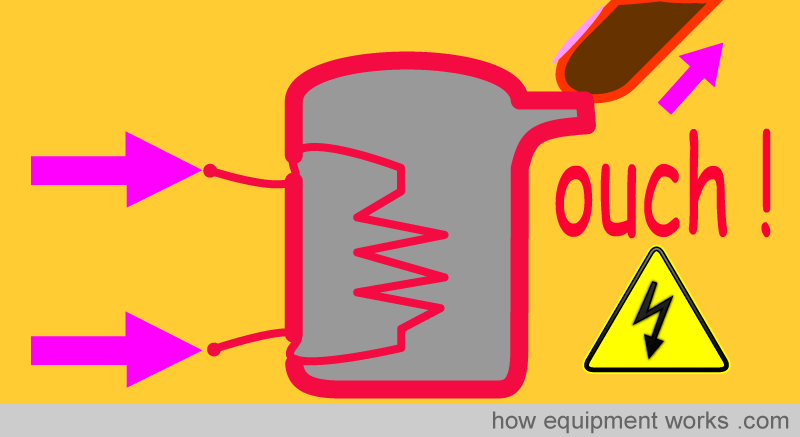
We will return later to this faulty kettle in our discussions. For the moment, let us assume that our kettle has no electrical fault and is safely boiling your water for a tea break.

Please click the “Next” button below to read part 2 about electrical safety. Thank you.